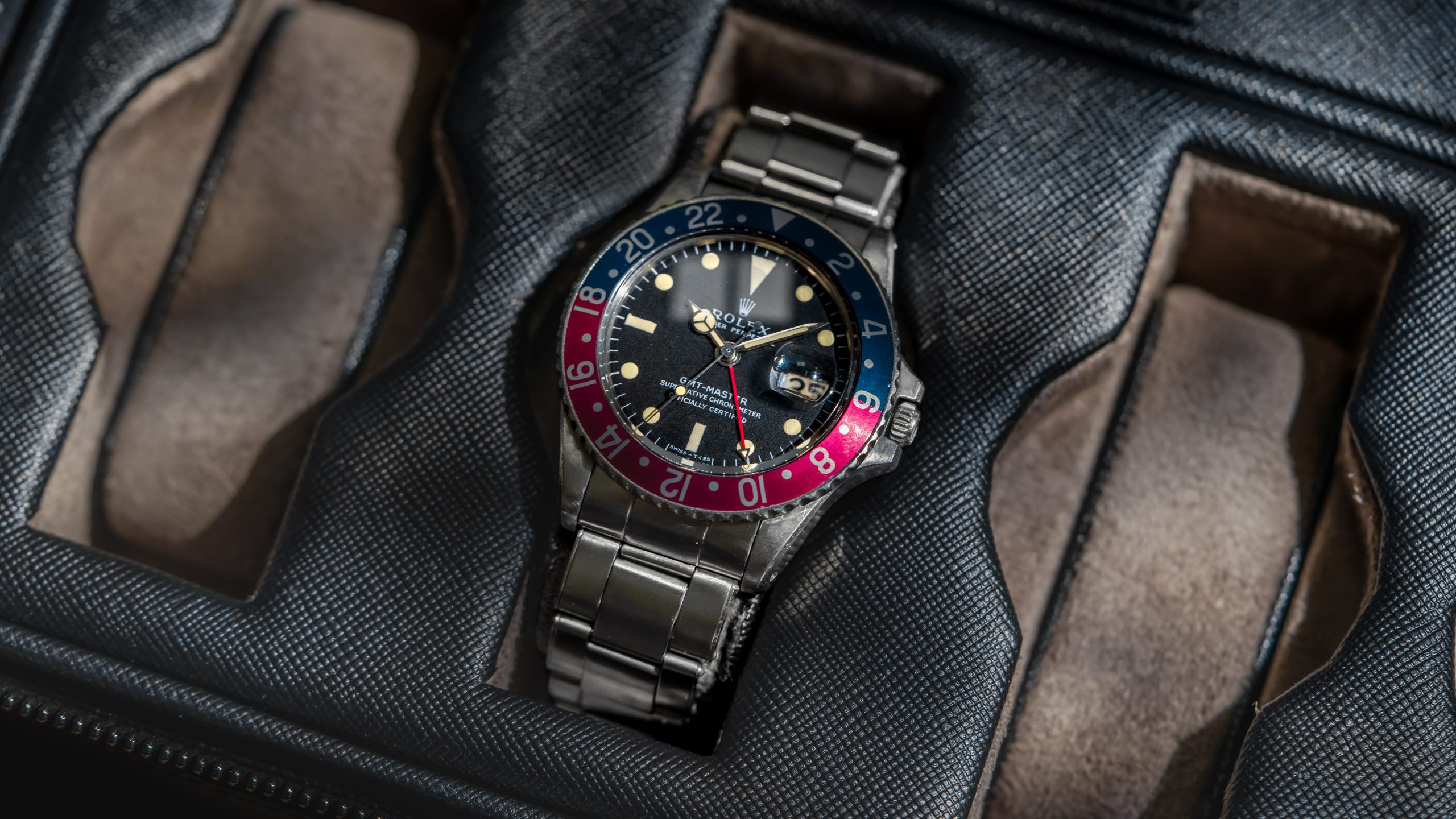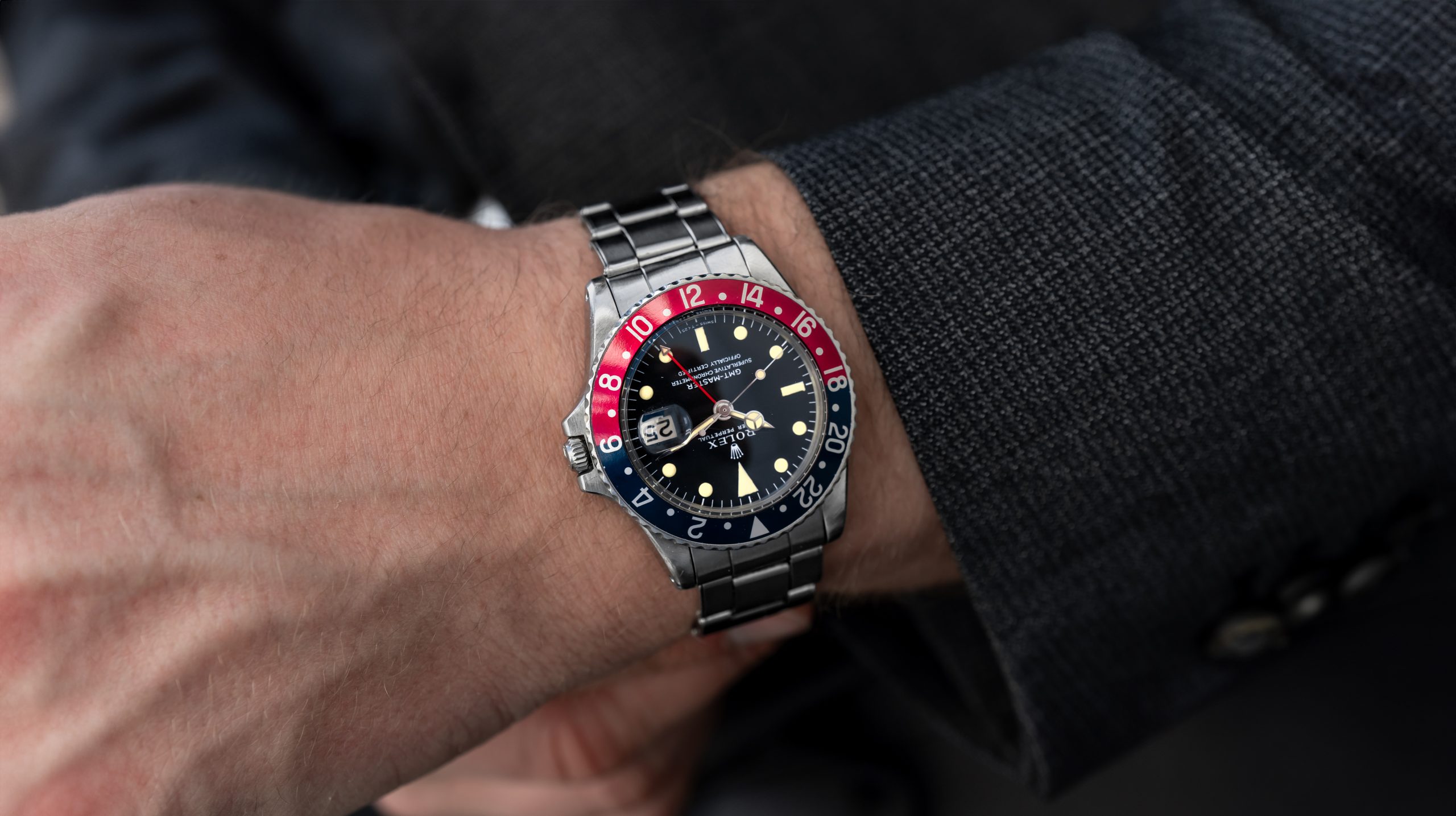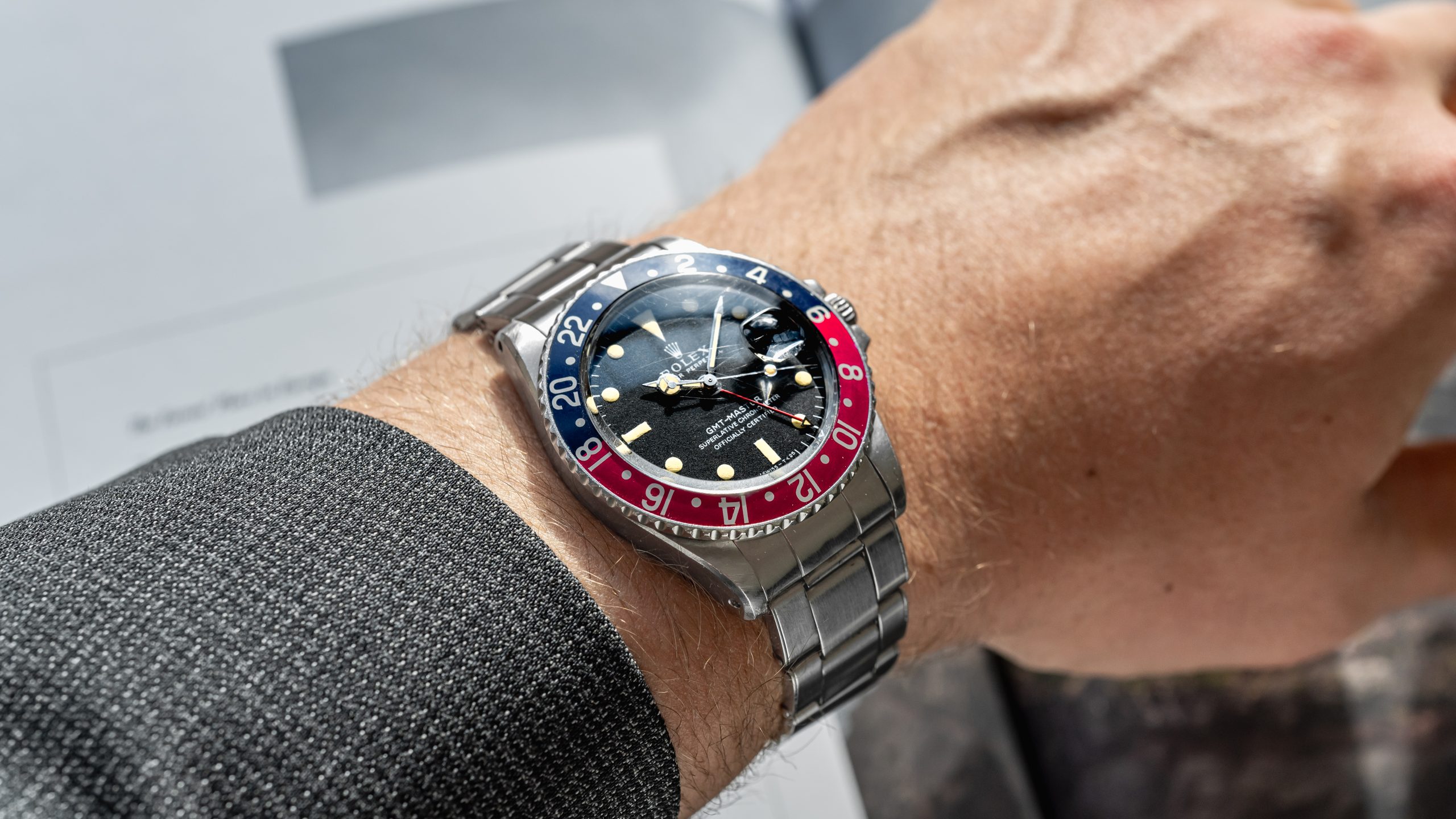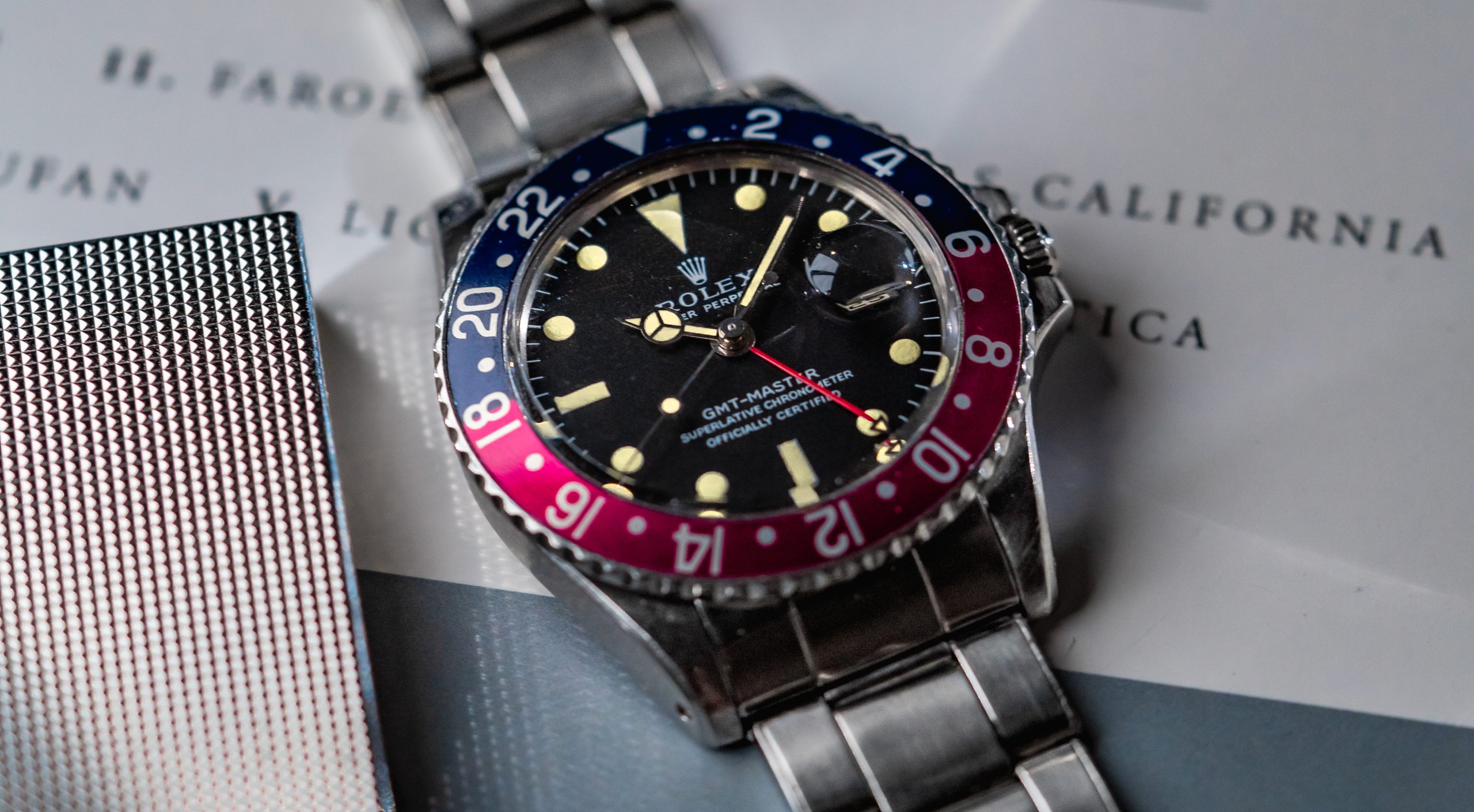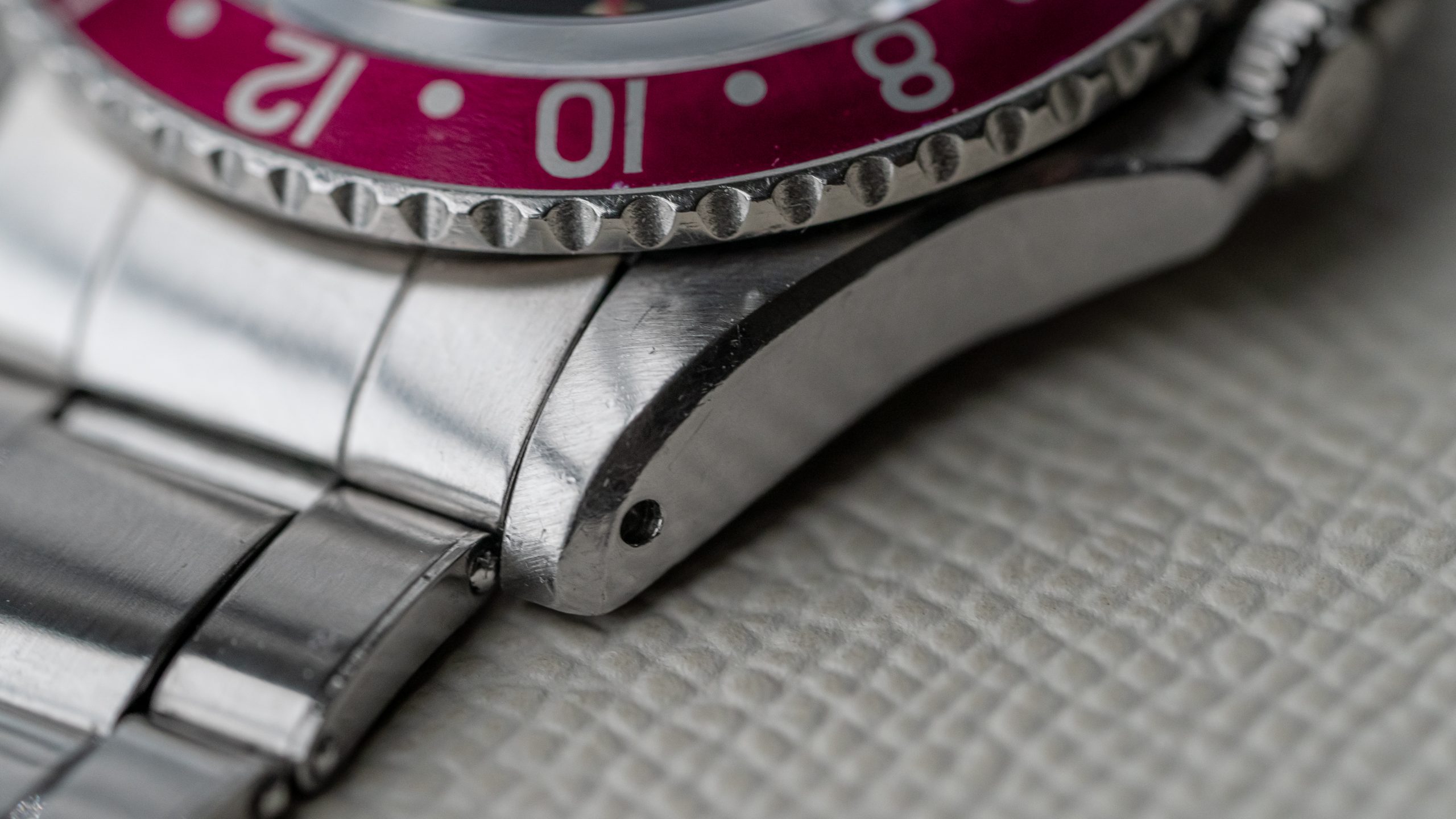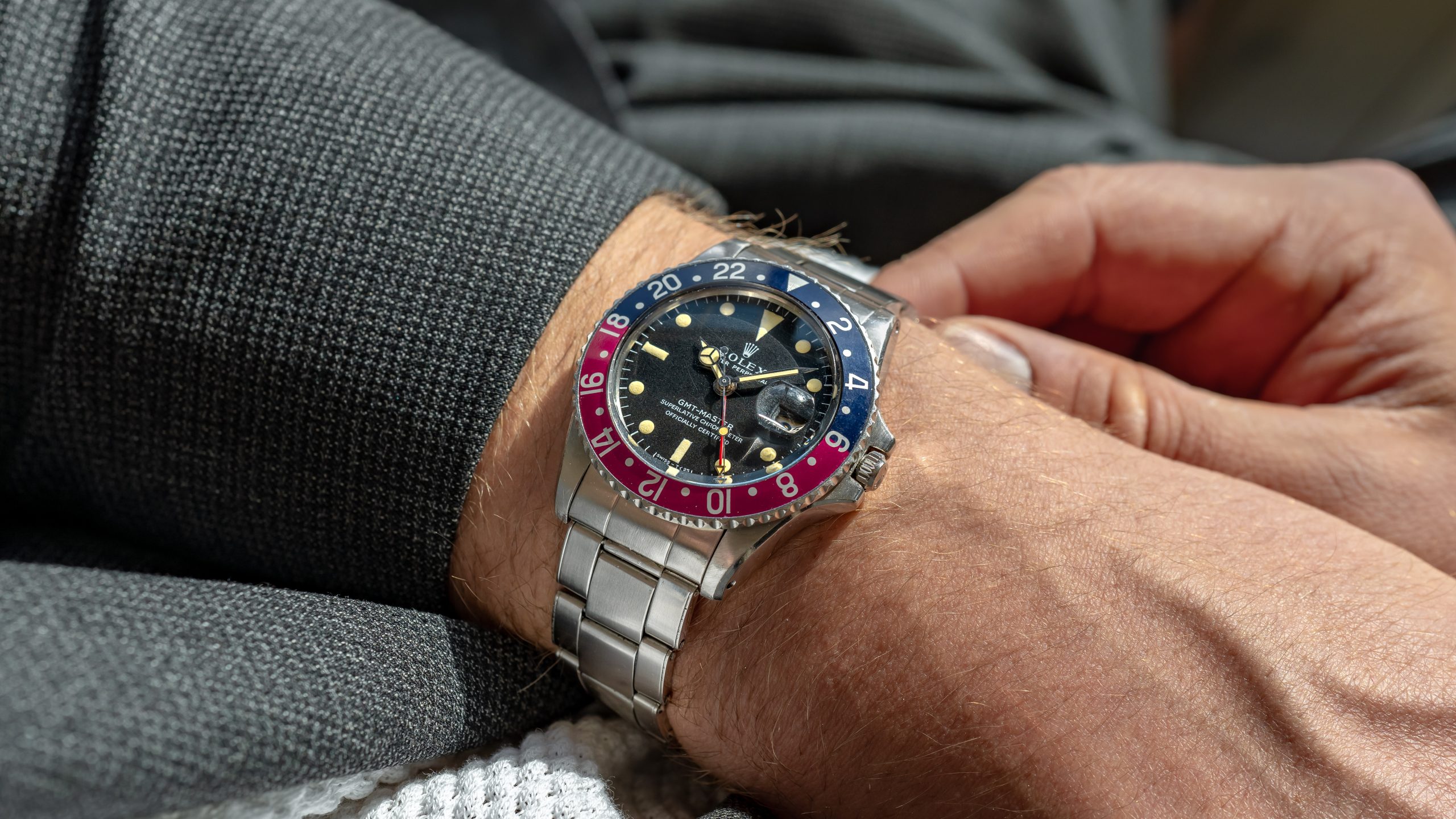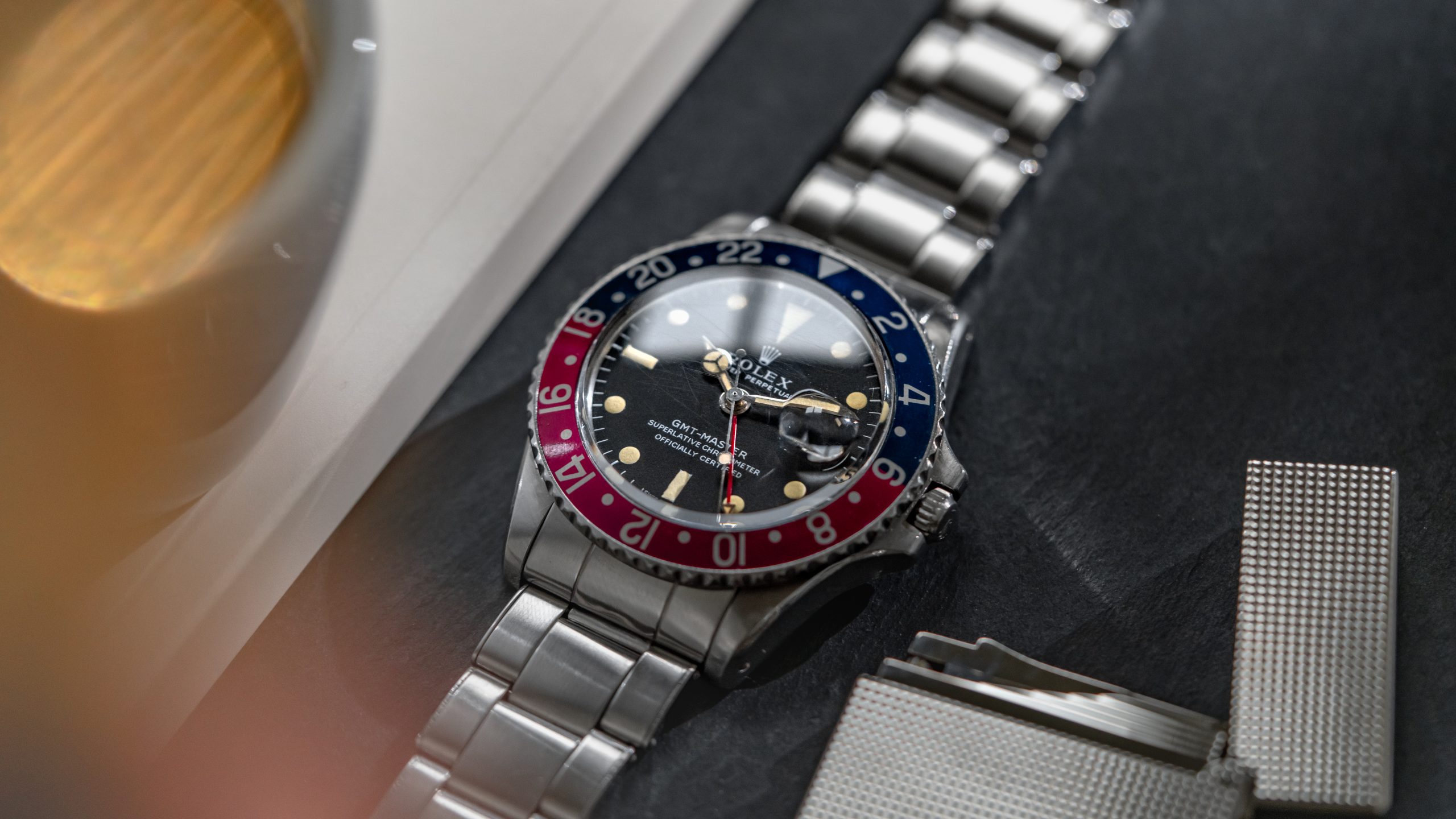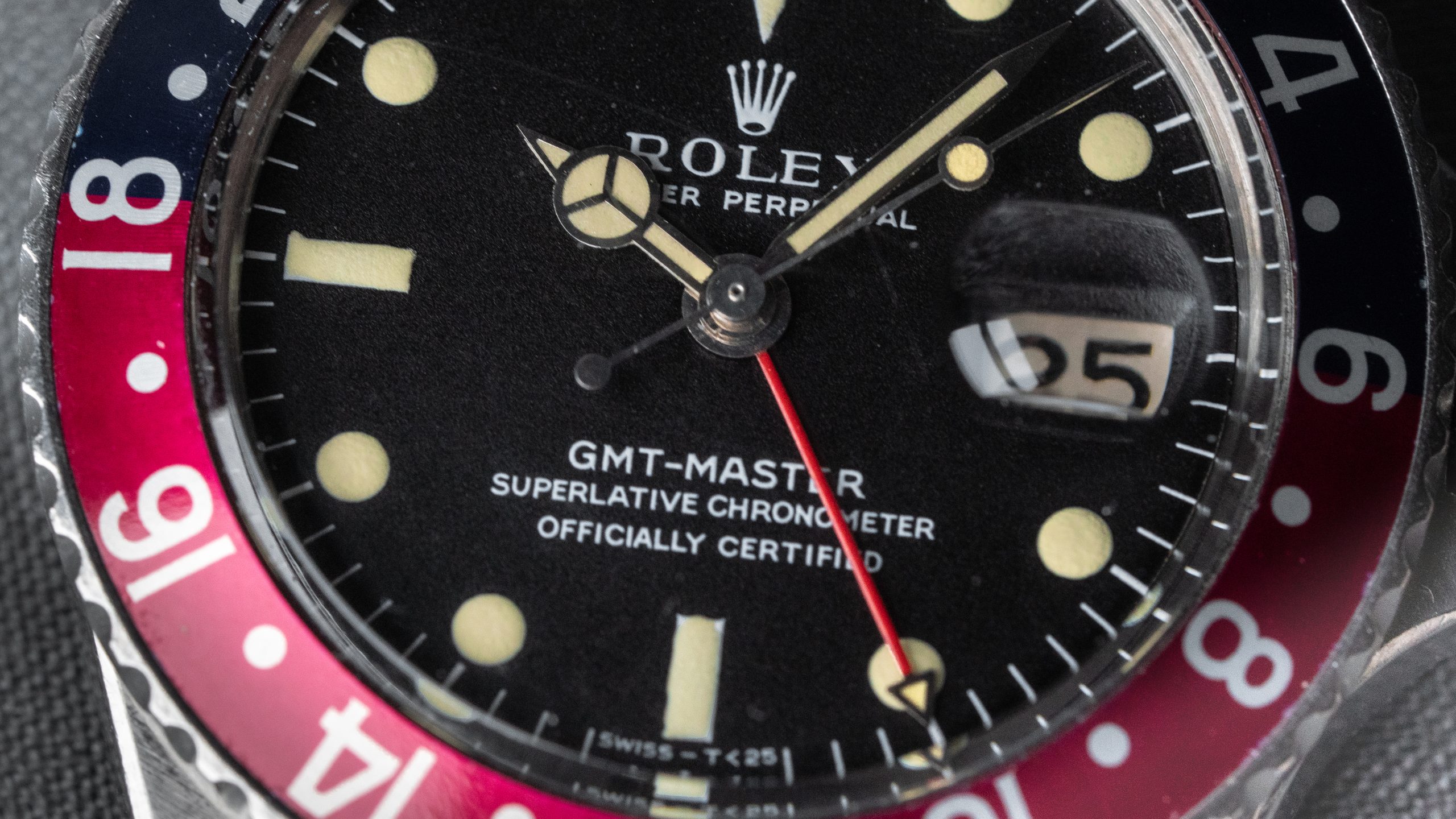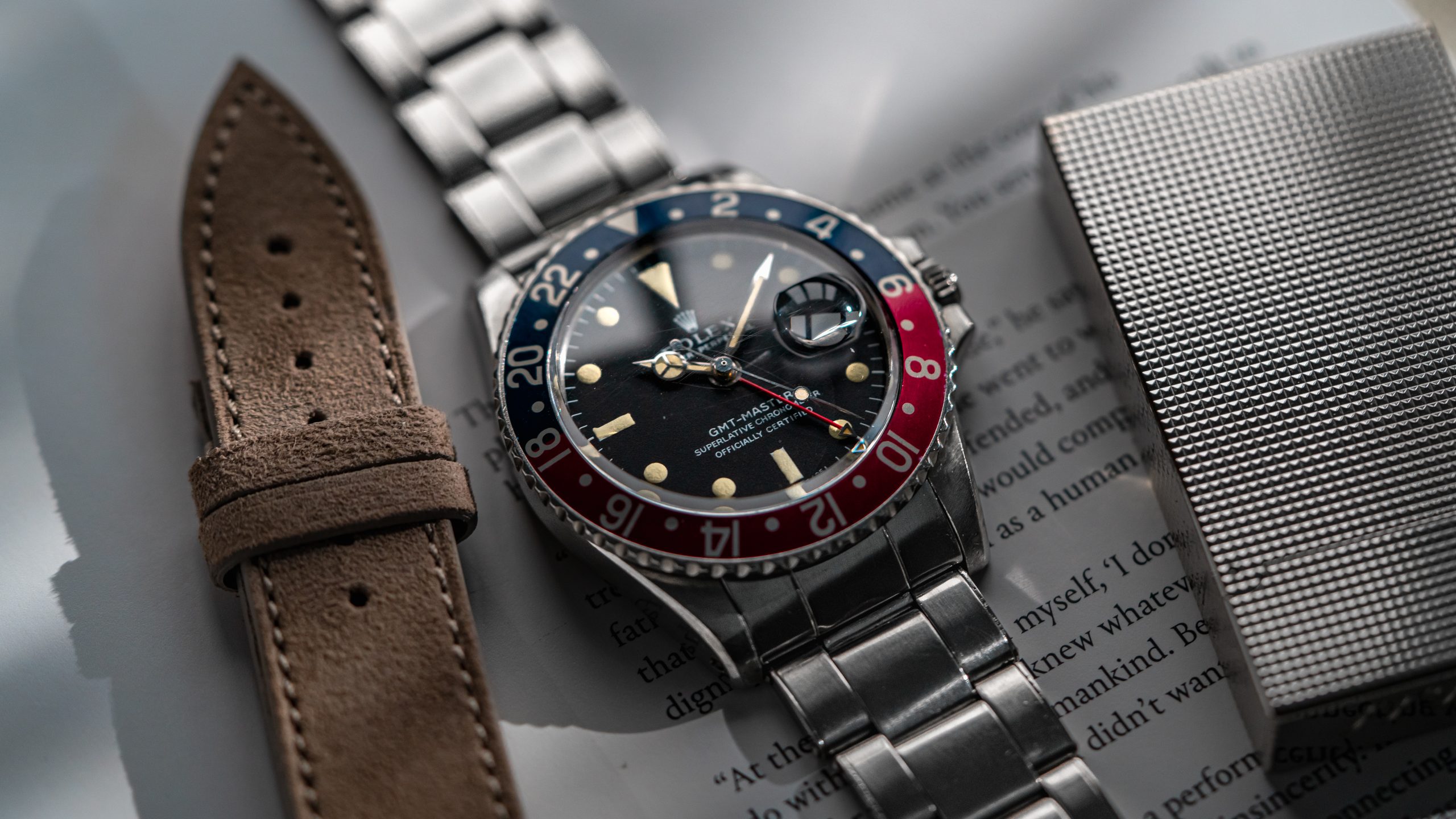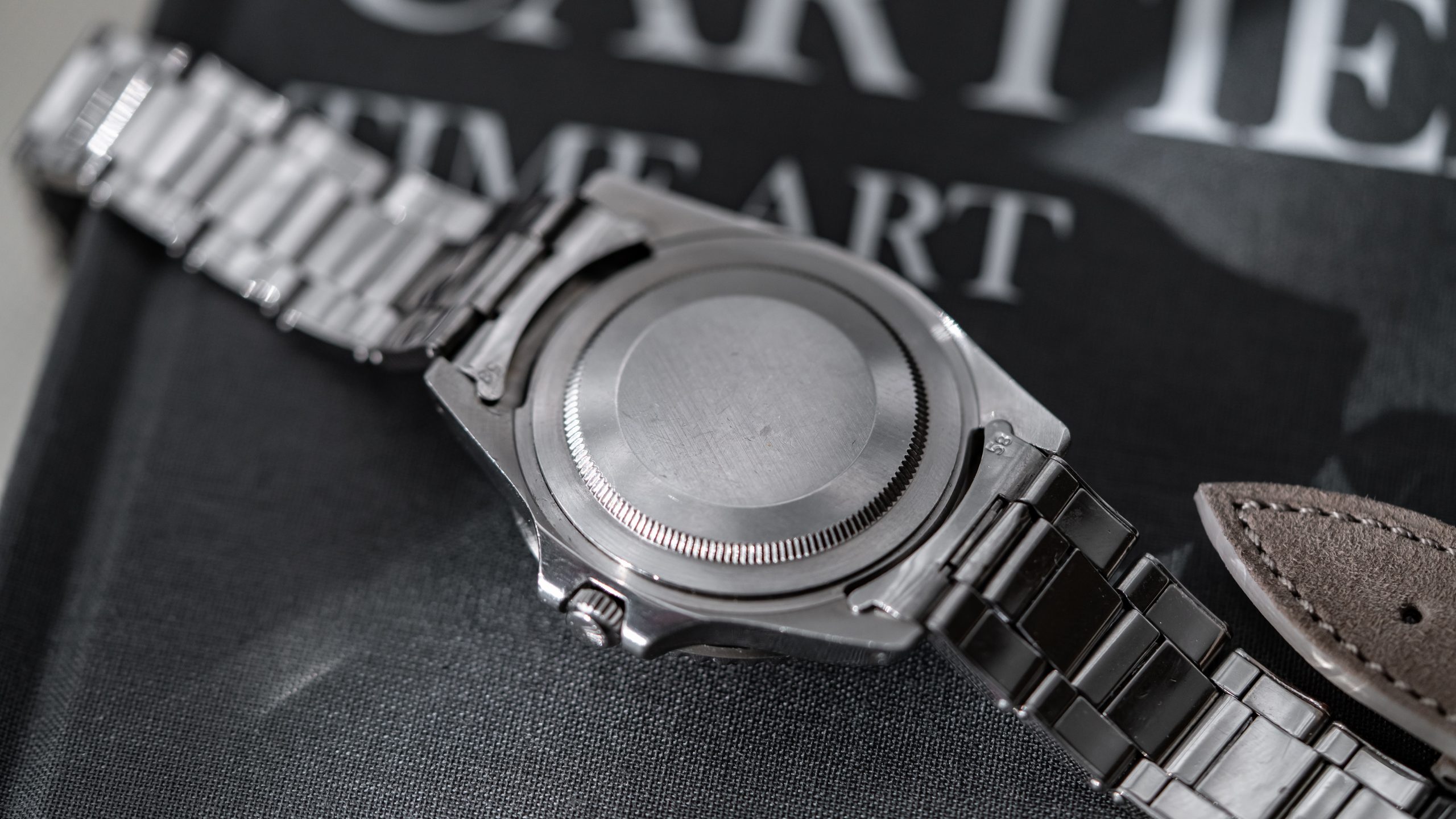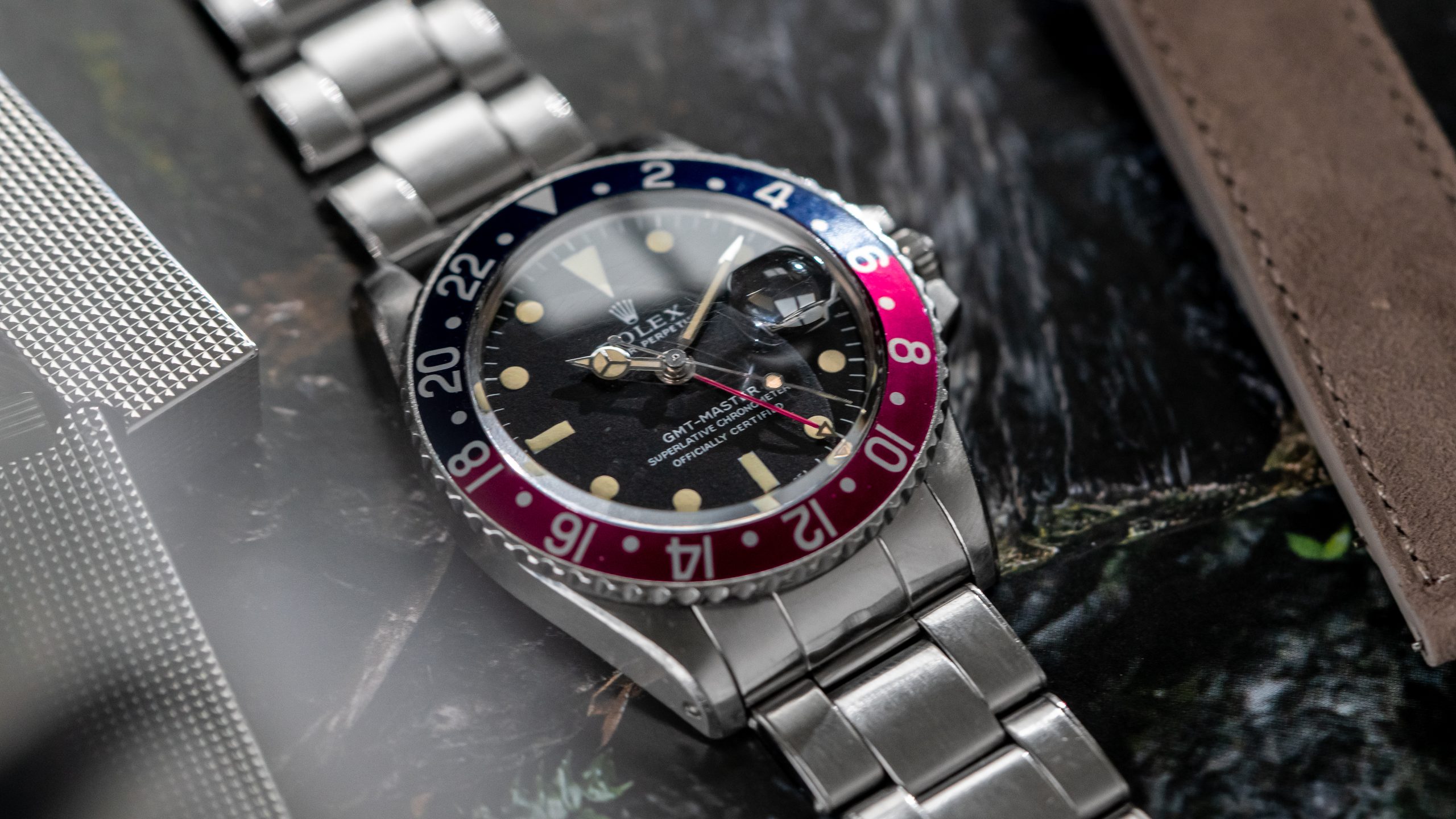The 1675 is undoubtedly one of the great pillars of vintage sport Rolex. Recognizable from across five rooms, the GMT-Master design found its footing here and proved so successful amongst the newly-founded 'jet set' that it remained in production from 1959 until 1980, one of the longest single-reference runs in Rolex history. In that time, the reference evolved through a considerable variety of cases, movements, dials, and bezels. This particular 1675 is distinguished by its early Mark 0.5 'Long E' dial, case condition, and bezel, which has aged from more red to vibrant, deep fuchsia.
The GMT-Master began with Pan-Am in the mid 1950s, whose pilots found themselves often having to keep track of more than one time zone. It was the dawn of the jet age, and instantly the pilot's GMT-Masters became a symbol of the newly minted jet set. From that initial 6542 design, the GMT-Master has changed all details over the years, but the fundamental design has remained unchanged. The 1675 added the practicality of an aluminum bezel and presided over the transition of gilt to matte dials. It was also the watch that popularized the GMT-Master, where the 6542 was far smaller production. Over the production of the 1675, there are roughly 18 known dial variants. This 1967 example is from the very start of the matte dial, mid-late '67, but still retains its vintage-aesthetic 'small triangle' GMT hand. More importantly, it features one of the most exotic twists on the GMT-Master aesthetic, only seen for a brief flash of production.
Fuchsia bezel 1675s are a category unto themselves. These bezels inserts were made of anodized aluminum, with colors not painted but galvanically applied much like gilt dial text. The era of fuchsia bezel production used a more purple red as its base and often aged to this more wildly fuchsia tone. This 'fault' was corrected by (roughly) '69. These bezels are always seen with 'Long E' dials, though the exact width of fuchsia production timeline is hotly debated. Known production ranges from 1967-1968, though some will tell you that range is wider. This example dates to later '67, right in the middle of the accepted timeline. This example also has what is known as the Mark 0.5 dial, which is a variant of the Mark 1 (sometimes called the Mark 1.5 equally) with the same 'Long E' but some gently seriffed fonts not present on the Mark 1, always with a small triangle GMT hand.
The GMT-Master has always perfectly blurred the line between offering the no-nonsense professional, tool-oriented presence that vintage Rolex fulfilled so well and the opulent, luxurious attitude of the mid-century air travel. This was a Rolex that would look the part traveling from New York to St. Tropez for an evening's dinner, but also ensure you knew exactly when to call your significant other. That dichotomy is as clear today as it was in the Pan-Am pilot's 6542. The Fuchsia 1675 adds another dimension we don't see often in GMT-Master. It's a bit playful, and almost by accident. This bright aesthetic is one very much linked to an study within vintage Rolex, this is an enthusiast’s choice. A Rolex for professionals, the well-travelled, or simply those who seek to add a bit of color to their lives.
